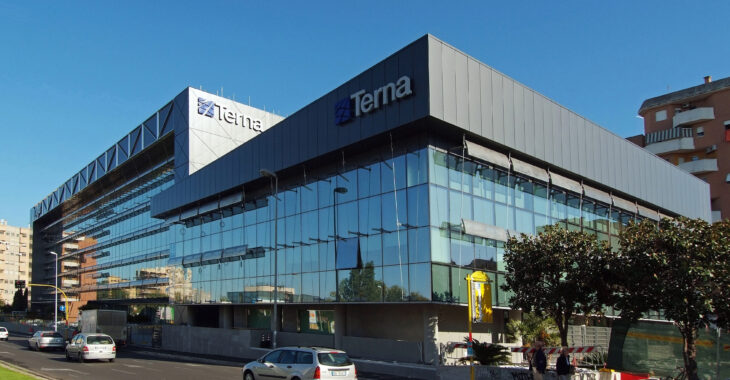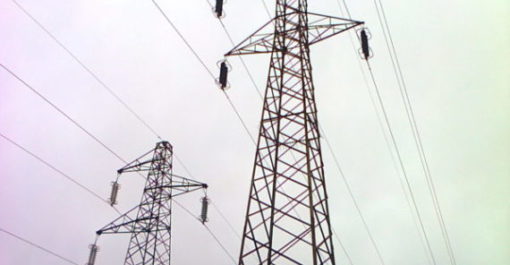A ottobre i consumi elettrici italiani sono risultati in crescita rispetto al mese precedente, nonostante la profonda incertezza alimentata dalla dinamica dei contagi relativa all’emergenza sanitaria da Covid-19.
Terna, la società che gestisce la rete elettrica nazionale ad alta e altissima tensione, ha infatti rilevato un valore di richiesta di energia elettrica che, destagionalizzato e corretto dagli effetti di calendario e temperatura, risulta in miglioramento congiunturale (+0,4%) rispetto a settembre 2020.
ùIl valore di ottobre 2020 è sostanzialmente allineato (-0,8%) ai 26,4 miliardi di kWh dell’ottobre del 2019 e, corretta dagli effetti calendario e temperatura, la variazione diventa -0,6%. Le fonti rinnovabili hanno coperto il 37% della domanda, rispetto al 28,8% dell’ottobre di un anno fa.
Il campione dei consumi dei clienti industriali monitorato da Terna, pur facendo registrare una flessione contenuta rispetto a ottobre dello scorso anno, appare ancora in ripresa rispetto ai mesi precedenti: la variazione congiunturale del mese di ottobre su settembre è pari a +1,4 per cento.
Nel mese di ottobre 2020 la domanda di energia elettrica è stata soddisfatta per l’84,2% con produzione nazionale e per la quota restante (15,8%) dal saldo dell’energia scambiata con l’estero. In dettaglio, la produzione nazionale netta (22,3 miliardi di kWh) è risultata in diminuzione del 2,8% rispetto a ottobre del 2019. In forte crescita le fonti di produzione eolica (+56,6%), idrica (+48,9%) e fotovoltaica (+9,8%). In flessione la fonte di produzione geotermica (-1%) e quella termoelettrica (-16,9%).
A livello territoriale, la variazione tendenziale di ottobre 2020 è risultata negativa al Nord (-1,2%) e al Sud e nelle Isole (-0,3%) e stazionaria al Centro.
L’indice IMCEI elaborato da Terna – che prende in esame e monitora in maniera diretta i consumi industriali di circa 530 clienti cosiddetti energivori connessi alla rete di trasmissione elettrica nazionale (grandi industrie dei settori ‘cemento, calce e gesso’, ‘siderurgia’, ‘chimica’, ‘meccanica’, ‘mezzi di trasporto’, ‘alimentari’, ‘cartaria’, ‘ceramica e vetraria’, ‘metalli non ferrosi’) – pur facendo registrare una flessione (-0,7%) rispetto a ottobre dello scorso anno, appare ancora in graduale ripresa rispetto ai mesi precedenti.
In particolar modo, il recupero è stato guidato dai comparti del siderurgico (+0,9) e dei materiali da costruzione (+5,9%), mentre sul dato complessivo hanno
influito negativamente i valori dei settori dei mezzi di trasporto (-6,6%) e della chimica (-5,8%).
Questo mese, inoltre, Terna per la prima volta ha elaborato un ulteriore dettaglio dell’Indice IMCEI analizzando separatamente i cosiddetti clienti puri (quelli che esclusivamente prelevano dalla rete) e gli Autoproduttori. In questo caso il valore elaborato per i clienti puri mostra una sostanziale stazionarietà (-0,1%) mentre quello relativo agli autoproduttori, numericamente inferiori, registra un -3,9%.
Nei primi 10 mesi del 2020 la domanda elettrica risulta ancora in flessione rispetto al corrispondente periodo del 2019 (-6,2%, anche in termini rettificati). Da gennaio a ottobre le fonti rinnovabili hanno coperto il 39% della domanda elettrica (35% nel 2019).
L’analisi dettagliata della domanda elettrica mensile provvisoria del 2020 è disponibile nella pubblicazione “Rapporto Mensile sul Sistema Elettrico”, consultabile alla voce “Sistema elettrico >> Dispacciamento >> Dati esercizio” del sito www.terna.it.
I dati in tempo reale sull’esercizio del sistema elettrico nazionale sono inoltre consultabili sull’app di Terna disponibile sui principali store.
https://play.google.com/store/apps/details?id=it.terna.energia&hl=it
https://apps.apple.com/it/app/terna/id1458535498
Demand at 26.2 billion kWh, in line with 2019. Terna: recovery of electricity consumption continued in October. The IMCEI index still signifies gradual recovery for major industrial customers: positive data from the steel and construction material sectors – Growth in wind, hydroelectric and photovoltaic production: renewables covered 37% of monthly demand and 39% of the first ten months of the year (compared to 35% in 2019).
Rome, 12 November 2020 – In October, Italian electricity consumption increased compared to the previous month, despite the profound uncertainty fuelled by the social dynamics driven by Covid-19. Terna, the company that manages Italy’s high and extra-high-voltage electricity grid, has recorded a value for electricity demand which, when adjusted for seasonal, calendar and temperature effects, reveals an improvement (+0.4%) on September 2020.
The value for October 2020 is essentially in line (-0.8%) with the 26.4 billion kWh from October 2019 and, adjusted for calendar and temperature effects, variation is -0.6%. Renewable sources covered 37% of the demand, compared to 28.8% in October last year.
The consumption sample of industrial clients monitored by Terna, while recording a slight decrease compared to October last year, still appears to be recovering compared to previous months: short-term variation in October compared to September was +1.4%.
In October 2020, 84.2% of electricity demand was met by national production and the remainder (15.8%) by the balance of electricity exchanged with foreign countries. More specifically, net national production (22.3 billion kWh) dropped by 2.8% compared to October 2019. Wind (+56.6%), hydroelectric (+48.9%) and photovoltaic (+9.8%) energy production show strong growth. Geothermal production (-1%) and thermal production (-16.9%) decreased.
At the regional level, in October 2020 there was an increase in the North (-1.2%) and in the South (-0.3%) while Central Italy remained stable.
Terna’s IMCEI index – which directly examines and monitors the industrial consumption of about 530 large energy consumers connected to the Italian electricity transmission grid (large industries in the following industries: cement, lime and gypsum, steel, chemical, mechanical, transportation, food, paper, ceramics and glass and non-ferrous metals) – while recording a decrease (-0.7%) compared to October last year, still appears to be gradually recovering compared to previous months. The recovery has been driven mainly by the steel (+0.9) and construction materials (+5.9%) sectors, although the overall figure was negatively affected by the transport (-6.6%) and chemical (-5.8%) sectors. Furthermore, this month and for the first time ever, Terna added a
further detail to the IMCEI index, analysing so-called pure customers (those who only withdraw from the grid) and self-producers separately. In this case, the value recorded for pure customers was essentially unchanged (-0.1%) while the value for self-producers, which there are less of, was -3.9%.
In the first 10 months of 2020, electricity demand was still down compared to the same period of 2019 (-6.2%, also in adjusted terms). From January to October renewable sources covered 39% of electricity demand (35% in 2019).
A detailed analysis of provisional 2020 monthly electricity demand is available in the publication “Monthly Report on the Electricity System”, under the section “Electric System >> Dispatching >> Operating Data” at www.terna.it.
Real-time data on the operation of the national electricity system can also be found on the Terna app, available on all app stores.
https://play.google.com/store/apps/details?id=it.terna.energia&hl=it







